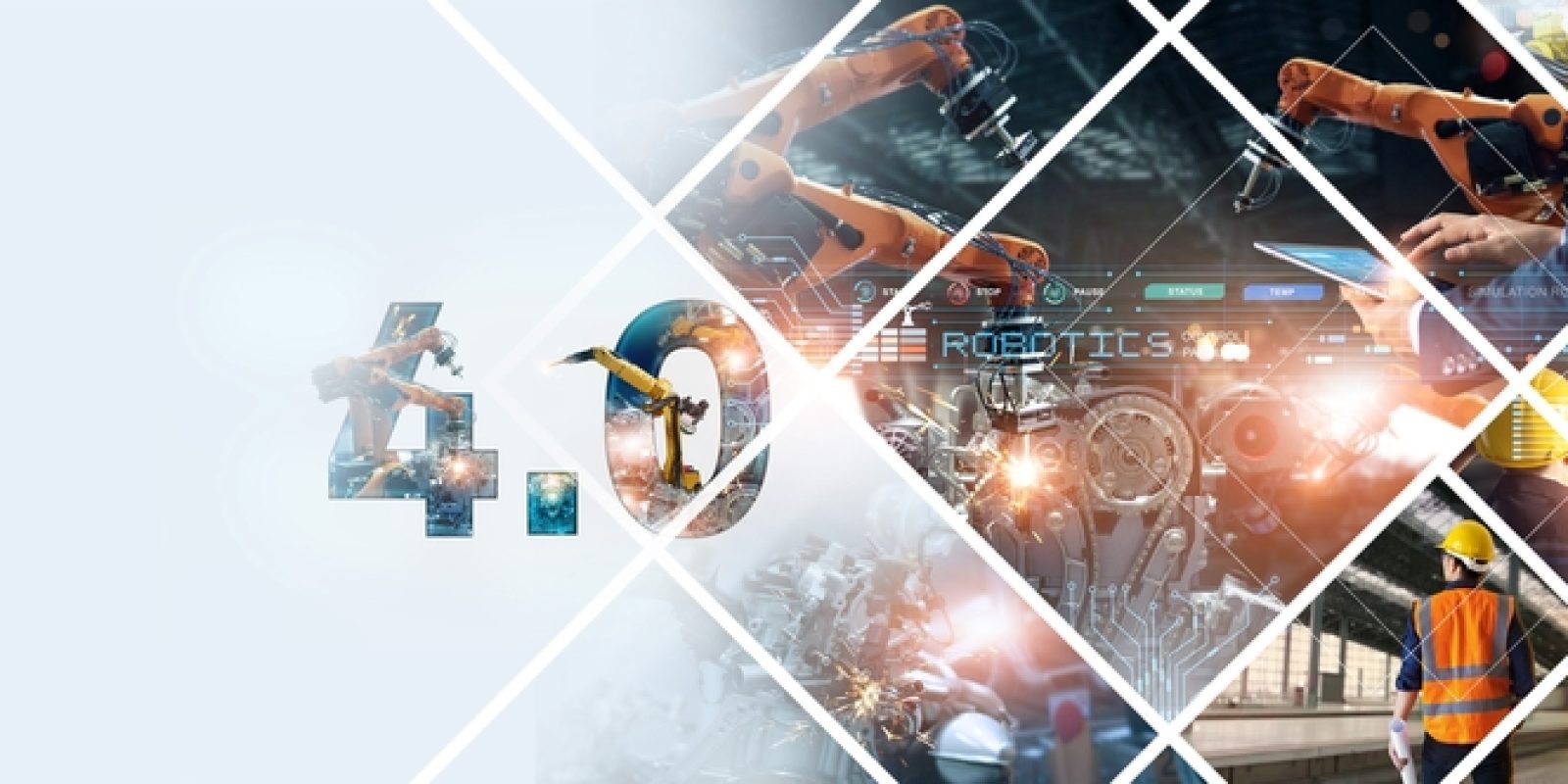What is Industry 4.0?
Industry 4.0, also known as the fourth industrial revolution, is upon us. Industry 4.0 refers to the ongoing transformation of traditional manufacturing and industrial processes through the integration of digital technologies, automation and data-driven decision-making. This revolution has transformed supply chain and manufacturing processes through digitalization, internet of things (IoT), big data analytics, artificial intelligence (AI), robotics, automation and smart manufacturing.
Industry 4.0 has significant ramifications for manufacturing and industrial robotics. According to a market report, the AI robot market size is expected to reach $184.75 billion by 2030. To maintain a competitive advantage, manufacturers need to keep up with this new wave of technology. How can manufacturers merge their industrial robotics systems with industry 4.0 technology, and how will this transform their operations for the better?
Industrial Robotics 101
Industrial robotics encompasses the gamut of robotic systems that are leveraged largely in manufacturing environments. These systems are well known for their ability to provide precision and repetition to tedious and difficult tasks that manufacturers face in their facilities. Industrial robotics are particularly helpful for tasks such as assembly, welding, material handling, packaging and inspection. While there are many types of robots that can be used in an industrial setting, there are five types of robots that are most common in industrial settings.
The Big Five in Industrial Robotics
- Articulated Robots: With rotary joints resembling a human arm, these systems provide a wide range of motion and flexibility for tasks like welding, assembly, material handling and painting.
- Selective Compliance Assembly Robot Arm (SCARA) Robots: With a horizontally articulated arm moving on the X-Y plane, SCARA robots are commonly used for high-speed assembly and pick and place applications like electronics manufacturing and packaging.
- Cartesian Robots: Operating on three linear axes, Cartesian robots are often used for precise positioning and handling of heavy loads, such as CNC machining, 3D printing and material handling.
- Delta Robots: With three or more arms connected to a common base, Delta Robots are known for high-speed operation in packaging, sorting and assembly.
- Collaborative Robotics (Cobots): Working alongside humans, Cobots leverage advanced sensors and safety features to detect and respond to human presence. They are commonly used for assembly, inspection and packaging.
While these systems are incredibly powerful on their own, emerging technologies are poised to provide even more value.
Industrial Robotics 4.0
Industrial robotics are known for their ability to increase productivity, improve product quality, enhance workplace safety and reduce labor costs. Emerging technologies are paving the way to further augment those benefits. Industrial robotics and industry 4.0 intersect in three key ways.
Artificial intelligence (AI) and Machine Learning (ML): AI increases the level of autonomy and intelligence that robots can use when completing tasks in a manufacturing environment, while ML allows robots to adapt and learn from their environment, optimizing their performance over time.
- Example 1: AI-powered vision systems enable robots to perceive and interpret visual information, enhancing object recognition, quality inspection and autonomous navigation.
- Example 2: By analyzing vast amounts of sensor data in real-time, machine learning algorithms can anticipate equipment failures, enabling proactive maintenance interventions to minimize downtime and optimize production efficiency.
Big Data Analytics: Sensors and data-generating devices can generate vast amounts of data, often called “big data.” Big data analytics techniques allow manufacturers to extract valuable insights from this data, enabling predictive maintenance, process optimization and quality control.
- Example 1: By analyzing data collected from industrial robots, manufacturers can identify patterns, anomalies and performance trends, facilitating data-driven decision-making and continuous improvement initiatives.
- Example 2: Real-time data analytics enable proactive monitoring of production processes, helping to prevent downtime, reduce waste and optimize resource utilization.
Internet of Things (IoT): The IoT enables seamless connectivity and communication between physical devices, including industrial robots, sensors, actuators and control systems. IoT-enabled industrial robots can be remotely monitored, controlled and managed from anywhere with internet access, providing greater flexibility and accessibility for manufacturers.
- Example 1: By integrating IoT sensors into robotic systems, manufacturers can gather real-time data on equipment health, operational status and environmental conditions, enabling predictive maintenance and condition-based monitoring.
- Example 2: IoT platforms facilitate the integration and interoperability of diverse manufacturing systems, enabling seamless data exchange and collaboration between robots, machinery and enterprise software systems.
Industrial robots are key to the success of a manufacturing facility, and manufacturers should be prepared to pay special attention to these systems as emerging technologies provide enhanced functionality. Interested in diving deeper into this topic? Read about enVista’s robotics solutions and services on our website or get your specific questions answered by contacting our automation experts today. Let’s have a conversation.®






